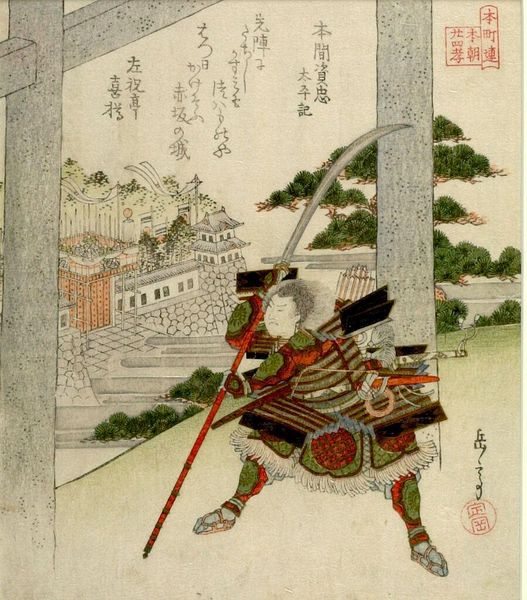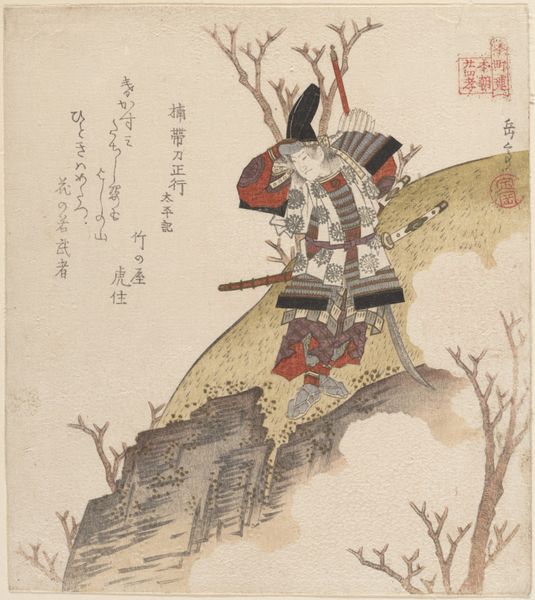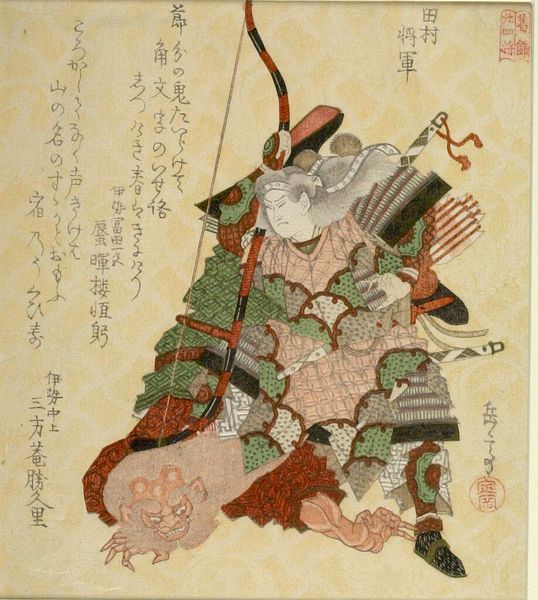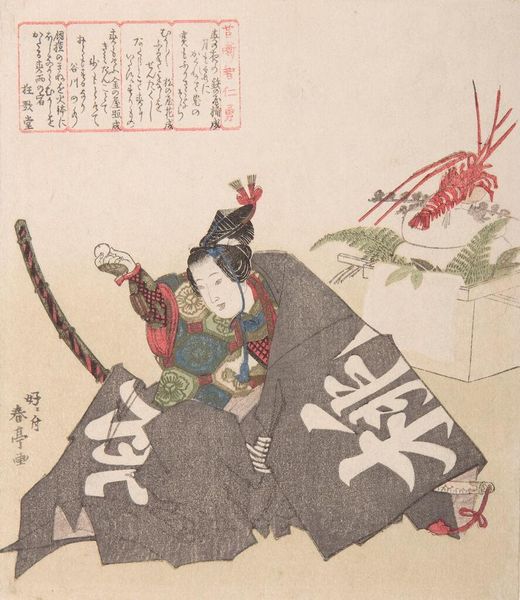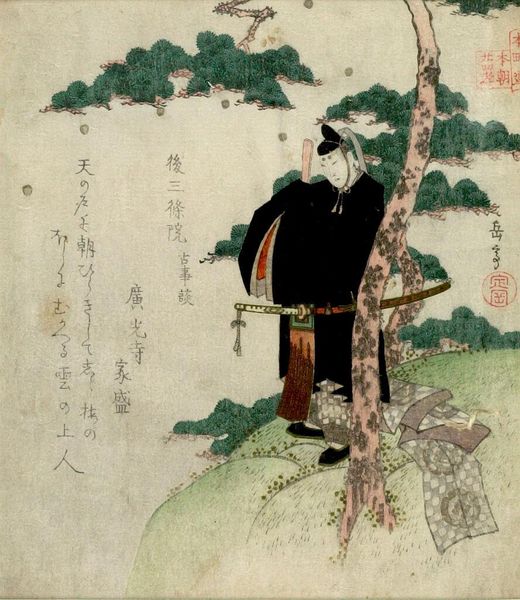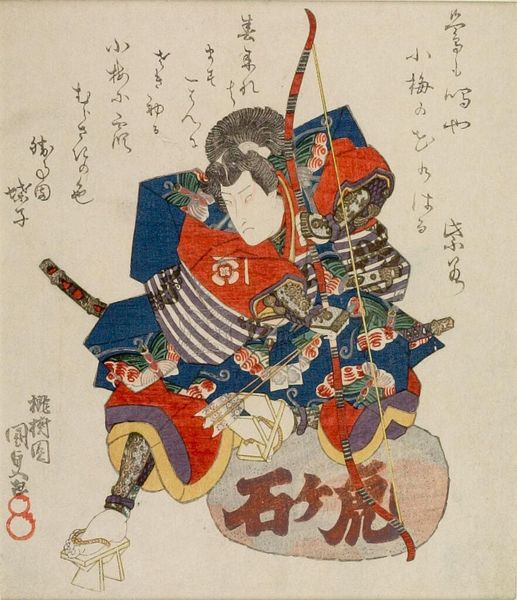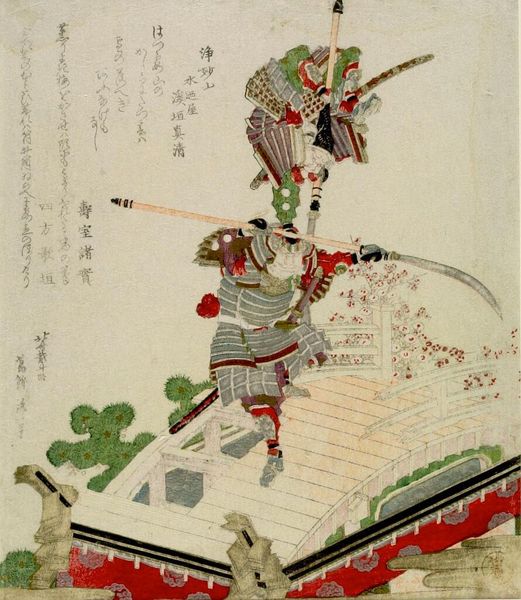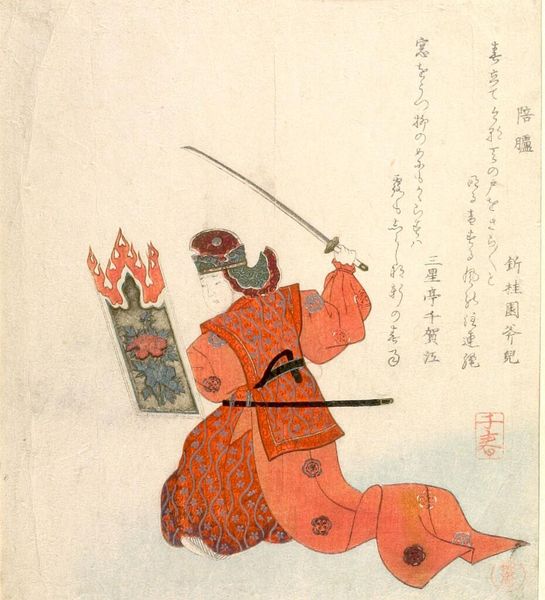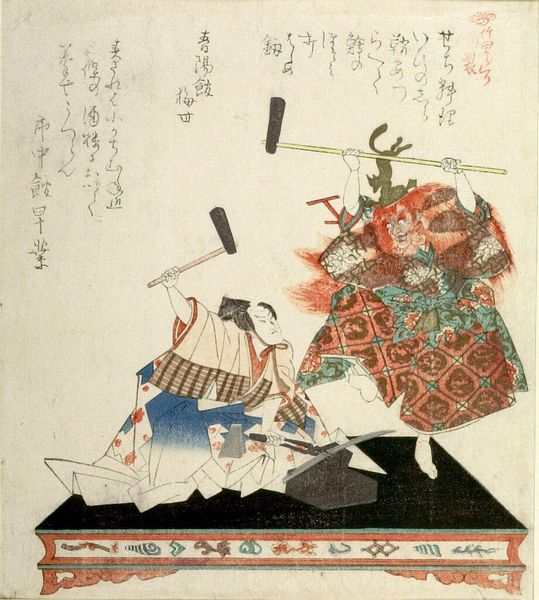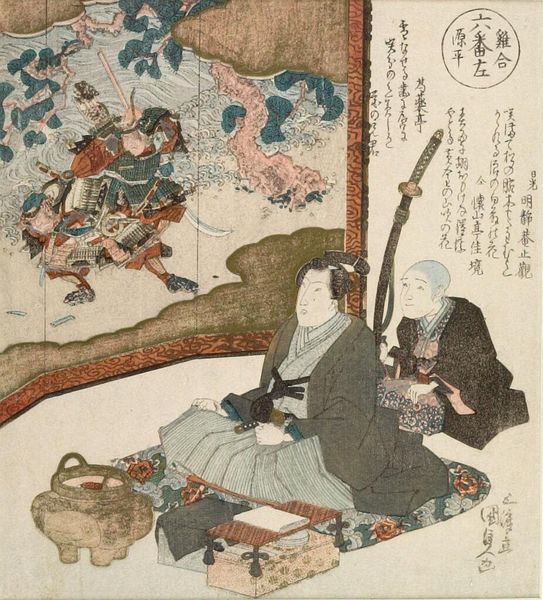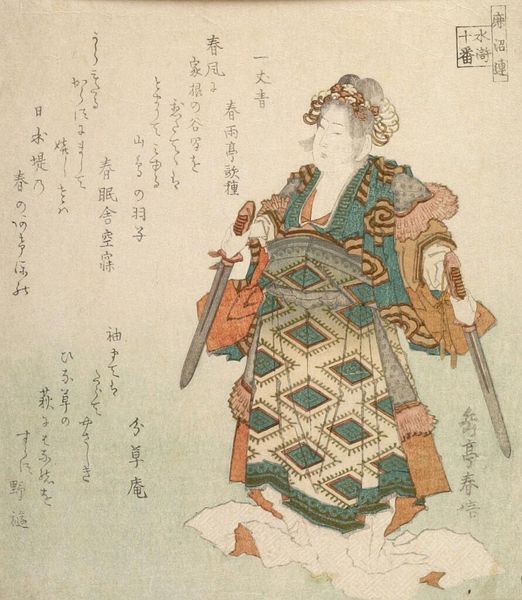
Kusunoki Tatewaki Masatsura from the Record of the Great Peace (Kusunoki Masatsura: Taiheiki), from the series Twenty-Four Japanese Paragons of Filial Piety for the HonchÅ Circle (HonchÅren honchÅ nijÅ«shikÅ), with poem by Takenoya Torazumi c. 1821 - 1822
0:00
0:00
Dimensions: Paper: H. 20.5 cm x W. 17.9 cm (8 1/16 x 7 1/16 in.)
Copyright: CC0 1.0
Editor: This woodblock print by Yashima Gakutei, titled "Kusunoki Tatewaki Masatsura from the Record of the Great Peace," depicts a lone samurai. He appears weary, perhaps burdened by duty. What sociopolitical narratives are embedded in this portrayal? Curator: This print, part of a series on filial piety, presents a complex intersection of samurai ideals and social expectations. How might the concept of "filial piety" be interpreted as a tool for reinforcing social hierarchies or even militaristic values during this era? Editor: So, his fatigue might symbolize the sacrifices demanded by societal expectations? Curator: Precisely! And consider the poem accompanying the image. How does it contribute to the construction of this figure as both a warrior and a symbol of familial duty, potentially obscuring other aspects of his identity? Editor: That gives a new layer to this artwork. Thank you!
Comments
No comments
Be the first to comment and join the conversation on the ultimate creative platform.
